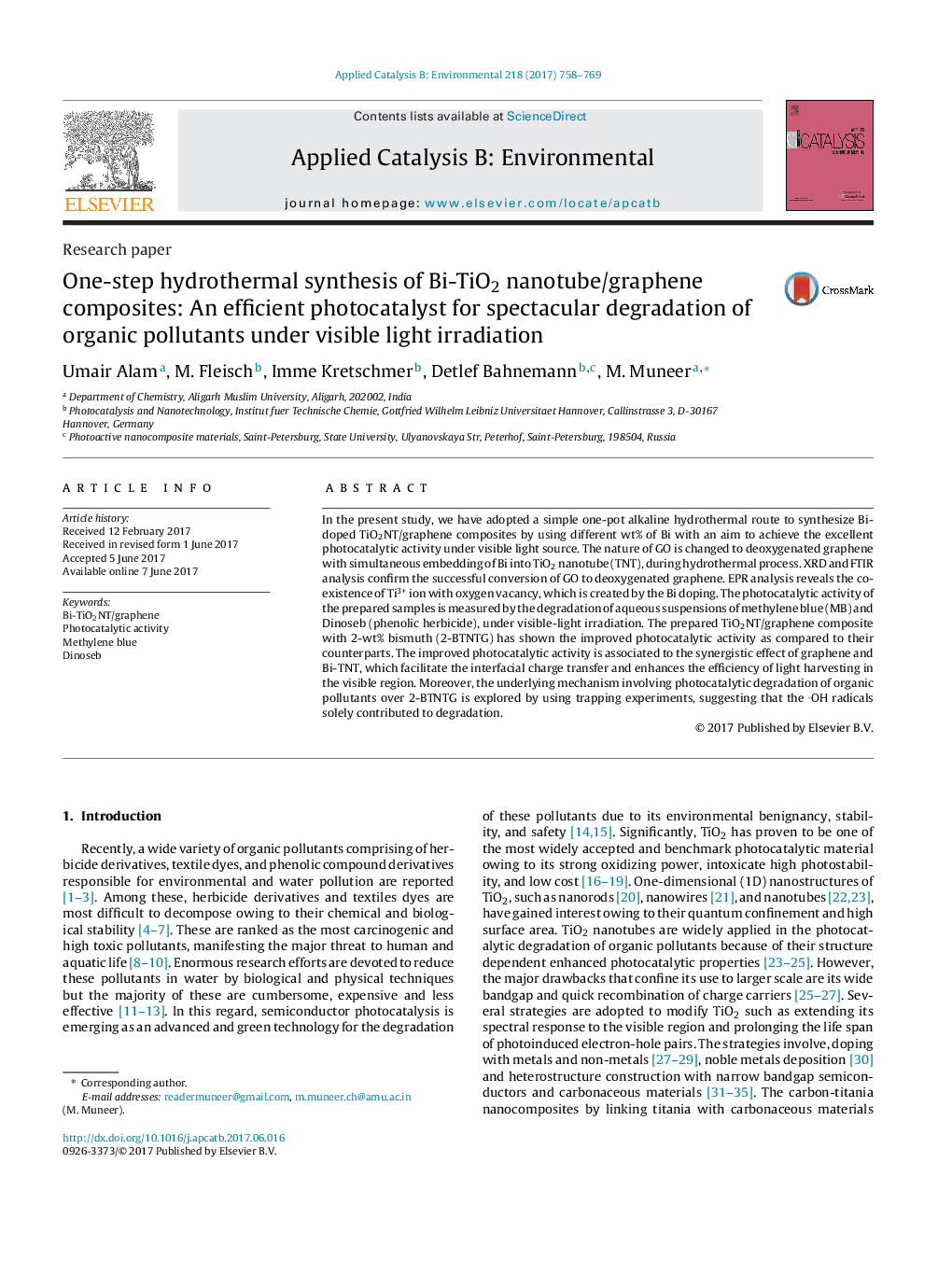| کد مقاله | کد نشریه | سال انتشار | مقاله انگلیسی | نسخه تمام متن |
|---|---|---|---|---|
| 6453844 | 1418802 | 2017 | 12 صفحه PDF | دانلود رایگان |
- Bi-doped TiO2 nanotubes anchored on graphene was synthesized by a simple and facile alkaline hydrothermal method.
- An in-situ method was employed to reduce GO and simultaneously transformed Degussa P25 nanoparticles into TiO2NTs.
- The intimate contact between Bi-TiO2 NT and graphene is responsible for enhanced photocatalytic activity.
- OH radical played the decisive role in the degradation of organic pollutants.
- The underlying photocatalytic mechanism for organic pollutants degradation has been discussed and proposed.
In the present study, we have adopted a simple one-pot alkaline hydrothermal route to synthesize Bi-doped TiO2NT/graphene composites by using different wt% of Bi with an aim to achieve the excellent photocatalytic activity under visible light source. The nature of GO is changed to deoxygenated graphene with simultaneous embedding of Bi into TiO2 nanotube (TNT), during hydrothermal process. XRD and FTIR analysis confirm the successful conversion of GO to deoxygenated graphene. EPR analysis reveals the co-existence of Ti3+ ion with oxygen vacancy, which is created by the Bi doping. The photocatalytic activity of the prepared samples is measured by the degradation of aqueous suspensions of methylene blue (MB) and Dinoseb (phenolic herbicide), under visible-light irradiation. The prepared TiO2NT/graphene composite with 2-wt% bismuth (2-BTNTG) has shown the improved photocatalytic activity as compared to their counterparts. The improved photocatalytic activity is associated to the synergistic effect of graphene and Bi-TNT, which facilitate the interfacial charge transfer and enhances the efficiency of light harvesting in the visible region. Moreover, the underlying mechanism involving photocatalytic degradation of organic pollutants over 2-BTNTG is explored by using trapping experiments, suggesting that the .OH radicals solely contributed to degradation.
231
Journal: Applied Catalysis B: Environmental - Volume 218, 5 December 2017, Pages 758-769
